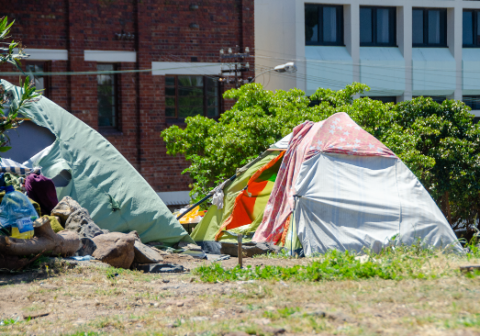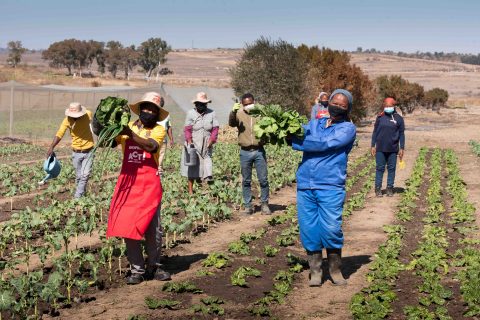Food Basket
When There Is Just Not Enough
Even in the worst of the drought, South Africa has been spared images of internationally donated bags of flour and rice being distributed from the back of trucks or piled on the side of the road, as has been the case with many of our near neighbours. But just because the country isn’t a beneficiary of schemes such as the UN World Food Program doesn’t mean everyone has enough.
According to the latest figures from Stats SA, 13.1% of South Africans suffer from hunger and don’t receive the nutrition they need every day. That’s 6-7 million people – and other estimates put the figure at double that. Yet while we talk openly about poverty and inequality, hunger as an issue appears less often in public debate.
Public and private interventions
The most visible form of food aid in South Africa is in schools, where feeding programmes for disadvantaged children are well established. The Department of Basic Education’s National School Nutrition Programme (NSNP) is government’s arm of intervention, aimed at making sure needy children whose families cannot afford to give them breakfast and/or school lunch get the nutrition they need to carry them through the day.
In 2015, the NSNP fed 9.2 million pupils in 19 800 schools across the country. KwaZulu-Natal, Limpopo and Eastern Cape, where the country’s poorest schools are concentrated, received the bulk of the NSNP budget allocation, at 32%, 18% and 18% respectively.
The fight against hunger among children is also being fought by non-governmental organisations such as The Lunchbox Fund. The fund initially began serving schools in Gauteng townships, and, as it grew, spread across South Africa. It is now active in all nine provinces and feeds 18 000 schoolgoing children in 280 schools every day, serving 9.5 million meals since inception in 2005.
According to managing director Sue Wildish, the meal provided at school is the only meal of the day for many children, which highlights just how dire the situation is and why food aid programmes play such an important role.
“It’s a very emotive, interesting and important issue we need to address as a country,” Wildish says.
Through the fund, pupils at schools such as Leonard Ntshuntshe Secondary School in Emalahleni receive decent meals. “They initially requested the meals just during exam time, but when we all saw the difference our breakfast made, we started providing them with porridge every morning. This year, they had a 99.2% matric pass rate, and one of their matrics achieved four distinctions and the highest marks in Economics in Mpumalanga,” Wildish says.
Free school meals are a common feature of education all over the world. In the UK, for example, 14.5% of primary-school children receive a free meal every day, not far off the level in South Africa.
What’s perhaps more disturbing is that tertiary institutions are also beginning to feel the need to provide meals for their students. For several years, the University of Johannesburg has been working with organisations such as Gift of the Givers and Stop Hunger Now, in addition to using its own funding, to tackle exactly the same problems of malnutrition and its effects on studying as primary schools have typically faced in the past.
It’s no coincidence, say commentators such as the University of the Witwatersrand chancellor and former deputy-chief justice, Dikgang Moseneke, that students are suffering visible poverty and hunger, and there is a period of unprecedented unrest in #FeesMustFall at the same time.






 Sign-up and receive the Business Media MAGS newsletter OR SA Mining newsletter straight to your inbox.
Sign-up and receive the Business Media MAGS newsletter OR SA Mining newsletter straight to your inbox.